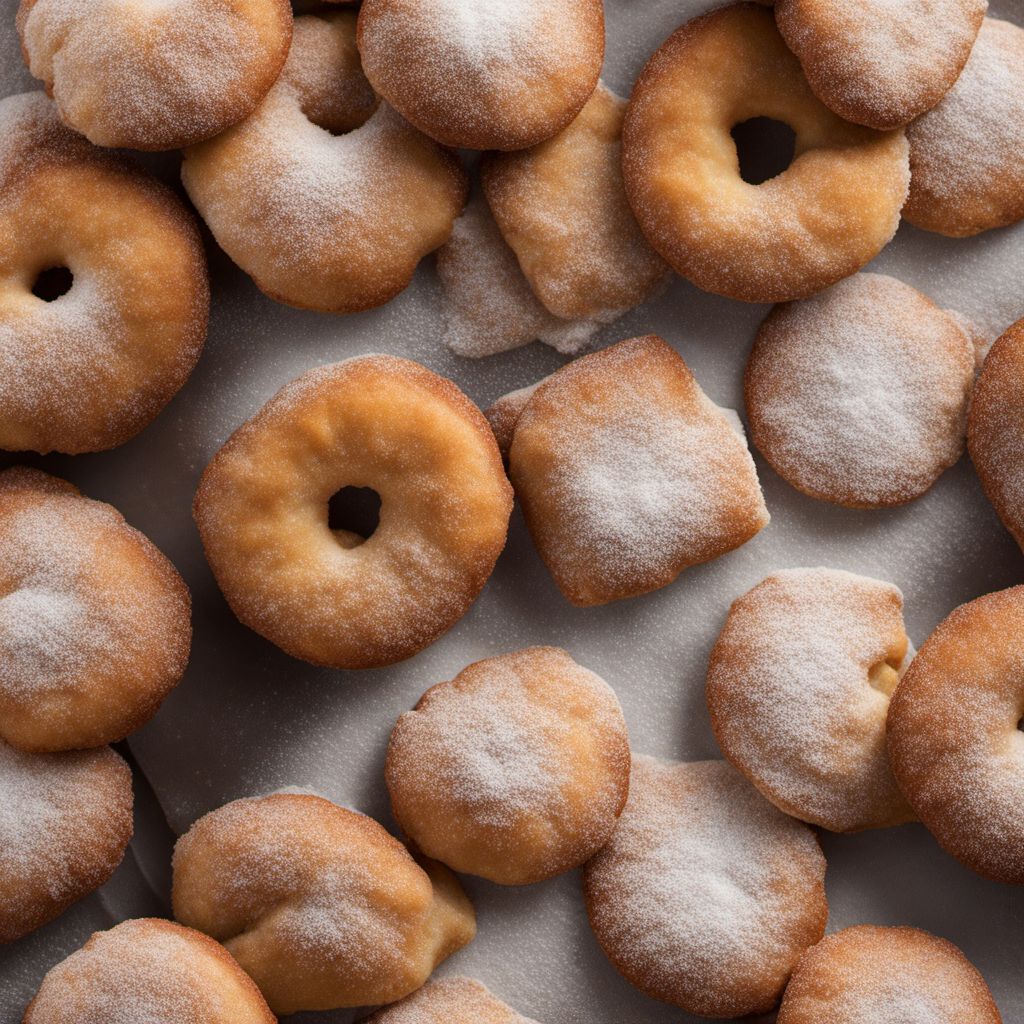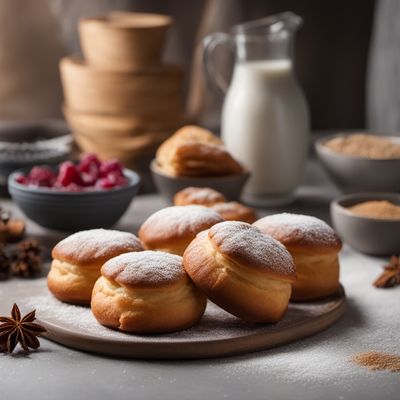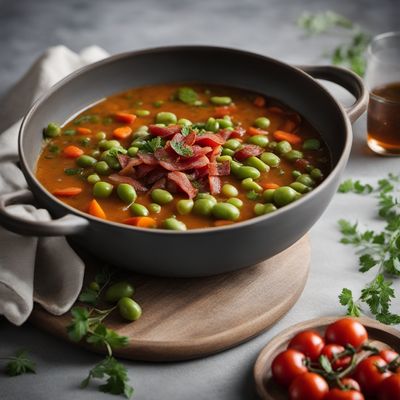
Recipe
Authentic Portuguese Malasadas
Pillowy Portuguese Delights: Malasadas
4.5 out of 5
Indulge in the sweet and fluffy goodness of Portuguese Malasadas. This traditional treat from Portugal is a beloved dessert that will transport you to the streets of Lisbon with its irresistible aroma and delightful taste.
Metadata
Preparation time
30 minutes
Cooking time
20 minutes
Total time
2 hours 50 minutes
Yields
12 malasadas
Preparation difficulty
Medium
Suitable for
Vegetarian, Lacto-vegetarian, Ovo-vegetarian, Pescatarian, Halal
Allergens
Wheat, Eggs, Dairy
Not suitable for
Vegan, Gluten-free, Dairy-free, Paleo, Keto
Ingredients
-
2 cups (470ml) whole milk 2 cups (470ml) whole milk
-
1/2 cup (100g) granulated sugar 1/2 cup (100g) granulated sugar
-
1/4 cup (57g) unsalted butter, melted 1/4 cup (57g) unsalted butter, melted
-
4 large eggs 4 large eggs
-
1 teaspoon vanilla extract 1 teaspoon vanilla extract
-
4 1/2 cups (563g) all-purpose flour 4 1/2 cups (563g) all-purpose flour
-
2 1/4 teaspoons active dry yeast 2 1/4 teaspoons active dry yeast
-
1/2 teaspoon salt 1/2 teaspoon salt
-
Vegetable oil, for frying Vegetable oil, for frying
-
Granulated sugar, for coating Granulated sugar, for coating
Nutrition
- Calories (kcal / KJ): 250 kcal / 1046 KJ
- Fat: 10g (Saturated Fat: 5g)
- Carbohydrates: 35g (Sugars: 10g)
- Protein: 6g
- Fiber: 1g
- Salt: 0.2g
Preparation
-
1.In a saucepan, heat the milk until warm (about 110°F/43°C). Remove from heat and stir in the sugar until dissolved.
-
2.In a large mixing bowl, combine the warm milk mixture, melted butter, eggs, and vanilla extract. Mix well.
-
3.In a separate bowl, whisk together the flour, yeast, and salt. Gradually add the dry ingredients to the wet ingredients, mixing until a sticky dough forms.
-
4.Transfer the dough to a lightly floured surface and knead for about 5 minutes until smooth and elastic.
-
5.Place the dough in a greased bowl, cover with a clean kitchen towel, and let it rise in a warm place for about 1 to 2 hours, or until doubled in size.
-
6.Punch down the dough and divide it into small portions, shaping each into a smooth ball.
-
7.Heat vegetable oil in a deep pot or fryer to 350°F (175°C). Carefully drop the dough balls into the hot oil, frying them in batches until golden brown on all sides.
-
8.Remove the malasadas from the oil using a slotted spoon and drain on a paper towel-lined plate.
-
9.While still warm, roll the malasadas in granulated sugar until evenly coated.
-
10.Serve the malasadas warm and enjoy their fluffy goodness.
Treat your ingredients with care...
- Eggs — Make sure the eggs are at room temperature before adding them to the dough. This helps in achieving a better texture and consistency.
- Active dry yeast — Activate the yeast by dissolving it in warm milk with a pinch of sugar. Let it sit for 5 minutes until it becomes frothy before adding it to the dough.
- Vegetable oil — Use a neutral-flavored oil with a high smoke point, such as canola or vegetable oil, for frying the malasadas.
Tips & Tricks
- For filled malasadas, inject your favorite filling using a piping bag fitted with a small round tip after frying and before coating with sugar.
- To achieve a consistent size for the malasadas, use an ice cream scoop or a measuring cup to portion the dough.
- Serve the malasadas warm for the best taste and texture.
- Experiment with different fillings such as chocolate, custard, or fruit preserves to add variety to your malasadas.
- If you prefer a lighter coating of sugar, you can dust the malasadas with powdered sugar instead.
Serving advice
Serve the warm malasadas on a platter or in a basket lined with parchment paper. They are best enjoyed fresh and can be served as a delightful dessert or a sweet snack.
Presentation advice
Arrange the malasadas in a visually appealing pattern on the serving platter. You can sprinkle some powdered sugar on top for an extra touch of elegance. Consider adding a side of your favorite dipping sauce or a dollop of whipped cream for an indulgent presentation.
More recipes...
For Malasadas
More Portuguese cuisine dishes » Browse all

Feijoada à portuguesa
Bean stew
Feijoada à portuguesa is a traditional Portuguese stew made with beans, pork, and vegetables. It is a hearty and flavorful dish that is perfect...

Cavacas de Margaride
Cavacas de Margaride is a traditional Portuguese pastry that originated in the town of Margaride, located in the region of Porto. It is a sweet...

Caldeirada
Caldeirada is a traditional Portuguese fish stew. It is made with a variety of fish, potatoes, onions, and tomatoes.






